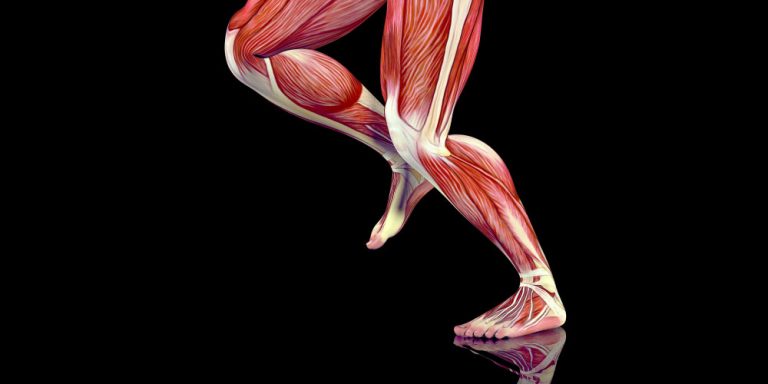Among the most generally important tendon functions in movement and stability is realized through their nature as fibrous connective tissue that transmits the action of muscles to their respective attachments onto bone. Their importance notwithstanding, cellular mechanisms contributing to the stiffness and strength of tendons are still largely mysterious. Recent scientific discoveries, however, are unraveling these processes, exposing how tendons can self-modulate to become tougher following a given stimulus.
The Function of Tendons in the Musculoskeletal System
Tendons have the critical job of transmitting muscle force to the bones, providing mobility. Thus, tendons should be flexible but resistant to the tensions and strains taken during physical activity. Knowing how they maintain their integrity and adapt to applied increases in loads is important for the development of treatments for tendon injuries and athletic performance optimization.
Collagen: A Building Block of Tendons
It is responsible for providing tensile strength and flexibility to the tendons since it is the main protein component. The collagen fiber arrangement and quality are major modulators of the strength and stiffness of the tendon. The focus of most recent research is on how collagen synthesis and remodeling are regulated at the cellular level.
Cellular Mechanisms of Tendon Adaptation
- Cellular Signaling Pathways: Specific activation of gene expression in signaling pathways, provoked through the application of mechanical load, regulates the production and organization of collagen fibers to result in enhanced tendon stiffness and strength.
- Matrix Metalloproteinases (MMPs): The MMPs are enzymes responsible for degrading collagen and other extracellular matrix components. Controlled activity of MMPs in the process of tendon remodeling is important because it allows for the removal of damaged fibers while giving way to the addition of other new, stronger fibers.
- Mechanical Loading and Tendon Cells: Tendon cells alone respond to mechanical loading by gene expression changes that lead to increased synthesis of collagen and other proteins concerned with strengthening of the tendon matrix. Adaptive responses, driven by the periodic application of mechanical loads from physical activity, in turn make tendons stronger.
Implications for Prevention of Injury and for Rehabilitation
Understanding cellular mechanisms behind tendon stiffness and strength modulates strategies of injury prevention and guides rehabilitation programs. In the case of athletes, this would lessen the risk of tendon-related injury, such as tendinopathies, through some kind of directed training programs that can achieve optimal tendon adaptation. In rehabilitation, therapies that stimulate collagen synthesis and remodeling can accelerate a patient’s recovery from tendon injuries.
Future Directions in Tendon Research
The more that is learned in this field, the more that remains to be discovered regarding the exact cellular and molecular mechanisms of tendon adaptation. Future research will most likely center around the following aspects:
- Genetic factors: the identification of genetic variants influencing tendon properties and susceptibility to injury
- Advanced Imaging Techniques: Development of imaging technologies for the in vivo assessment of tendon structure and function at the microscopic level.
- Regenerative Medicine: A study into the potential for repair and regeneration of damaged tendons through the use of stem cell therapies combined with tissue engineering.
Remodeling in the Extracellular Matrix
Positive tendon ECM, besides collagen, involves proteoglycans and elastin fibers that make critical contributions to the maintenance of tendon structure and function. Recent studies have established the dynamic nature of ECM, where proteoglycans themselves contribute to tendon elasticity and resilience and elastin fibers enhance the ability to recoil immediately after stretching. How these components interact with and remodel in response to mechanical stress explained improvements in the biomechanics of tendons.
Mechanotransduction Pathways
Mech-anotransduction is the process where mechanical signals are converted into biochemical responses inside cells. Specialized mechanoreceptors in the tendon cells sense changes in the mechanical loading. Ultimately, through transmission via integrins and focal adhesions, these signals will change gene expression and protein syntheses. The activation of mechanotransduction pathways will initiate tendon adaptation processes that eventually enable increased stiffness and strength.
Role of Inflammation and Healing.
Tendons have been known to go through the process of inflammation as a result of both injury and overuse, and are responsible for changing their mechanical properties and interrupting their structural integrity. Chronic inflammation is ultimately considered to disrupt collagen synthesis and ECM organization and to preclude tendons from degenerative changes. Acute inflammation, however, naturally develops during the healing process and prepares cells for repairing and remodeling the tissue. Suitable rehabilitation strategies aimed at balanced inflammatory responses are important to optimize recovery and reduce long-term tendon damage.
Clinical Applications and Therapeutic Strategies
Understanding cellular mechanisms of tendon adaptation has a direct influence on clinical practices and therapeutic interventions. Orthopedic surgeons and sports medicine specialists will be able to individualize treatment based on an individual’s tendon biomechanics and response to mechanical loading. Newer therapies targeting very specific tenets of the tendon-healing and regenerative process, like platelet-rich plasma injection and ultrasound-guided interventions, are aimed at speeding up recovery with better outcomes.
Challenges and Future Directions
Despite progresses of tendon biology, several translational challenges persist to be translated into clinical practice. Long-term studies are necessary for the confirmation of their efficiency in the newly presented therapies. Next, biomechanical and molecular levels need to combine for an advanced understanding of how tendons function throughout different populations and athletic disciplines. The potential role of epigenetic modifications and environmental factors modulating tendon health and adaptation deserves further research efforts.
Conclusion:
This discovery of cellular mechanisms stiffening and strengthening tendons is, if not more, one of the most fascinating breakthroughs in our developing knowledge regarding musculoskeletal health. Scientists are opening innovative routes to treatments and training strategies that can effectively enhance tendon function and prevent injuries through these complex processes. We look forward to new insights that will further improve tendon health and performance as further research evolves.

